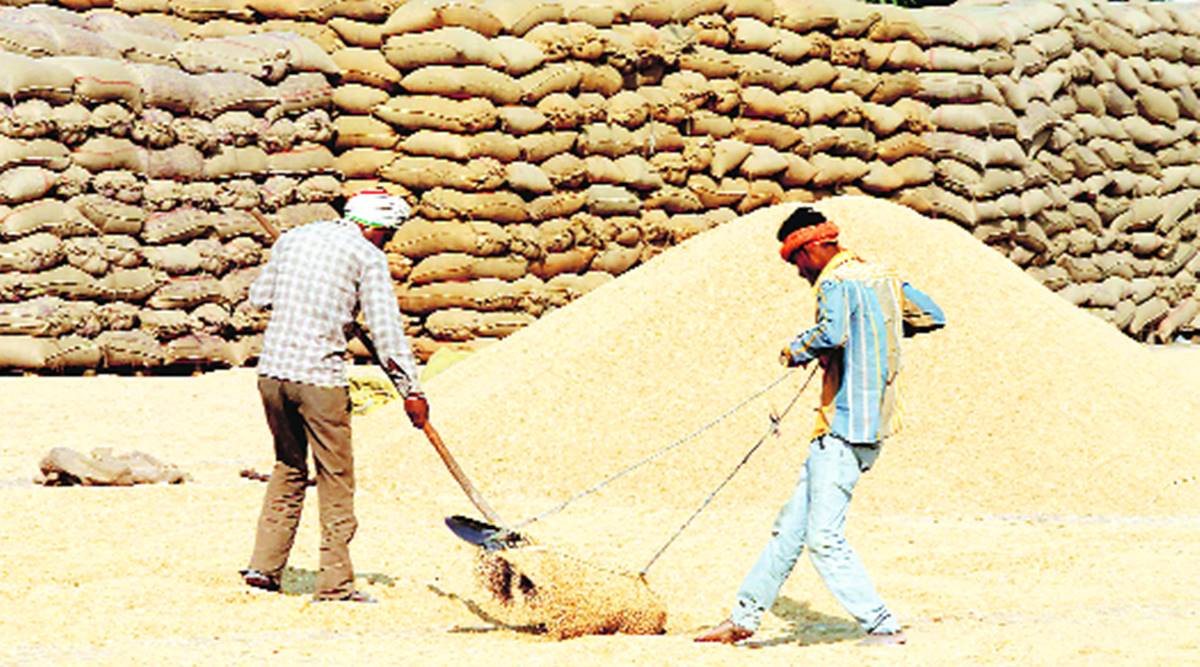 Labourers spread the paddy for drying at Grain Market near village Dhablan in Patiala on Sunday. (Photo: Harmeet Sodhi)
Labourers spread the paddy for drying at Grain Market near village Dhablan in Patiala on Sunday. (Photo: Harmeet Sodhi)The government has initiated the process of ascertaining the new State/UT-specific coverage ratios for rural and urban areas under the National Food Security Act, 2013 (NFSA), it is learnt.
According to sources, NITI Aayog had asked the Ministry of Statistics and Program Implementation (MoSPI) to undertake “an exercise of ascertaining the new State/UT-specific coverage ratios for rural and urban areas”.
The Ministry has furnished the required inputs to NITI Aayog and the same was deliberated in a meeting called by NITI Aayog on Thursday, sources said.
The meeting to review the coverage of population criteria under NFSA was chaired by NITI Aayog member Ramesh Chand. It was attended by the Chief Economic Advisor, Food Secretary, Secretary, MoSPI and other senior officials.
Move comes at a crucial time
An official said, “It was an exploratory meeting to discuss the state-wise cut-off for deciding the coverage under NFSA.
The MoSPI has come up with some numbers but the deliberations are at a very early stage,” the official said.
At present, NFSA covers up to 75 per cent of the rural population and 50 per cent of the urban population in the country. Based on this, state-wise coverage under NFSA was determined by the erstwhile Planning Commission—now NITI Aayog—by using the National Sample Survey Household Consumption Expenditure Survey data for 2011-12. Since then, the state-wise coverage ratio has not been revised.
Currently, Manipur has the highest coverage in rural areas across the country (88.56 percent), while Andaman & Nicobar Islands has the lowest (24.94 per cent). Manipur is followed by Jharkhand (86.48 per cent), Bihar (85.12 per cent) and Chhattisgarh (84.25 per cent).
In urban areas too, Manipur has the maximum coverage ratio (85.75 percent), while Andaman & Nicobar Islands has the lowest (1.70 percent). In urban areas, Manipur is followed by Bihar (74.53 per cent), Uttar Pradesh (64.43 per cent) and Madhya Pradesh (62.61 per cent).
On August 7, the NITI Aayog held a meeting to discuss state-wise coverage ratios under NFSA during which it was decided that MoSPI will undertake an exercise to ascertain the new coverage ratios.
Under the NFSA, each Antyodaya Anna Yojana household is entitled to 35 kg of foodgrains per month, and the priority households are entitled to 5 kg per person per month. The Centre had launched Pradhan Mantri Garib Kalyan Anna Yojana (PM-GKAY), through which additional free foodgrains of 5 kg per person per month are being provided to beneficiaries covered under NFSA. Initially, PM-GKAY was for three months—April, May and June—but it was later extended for another five months.